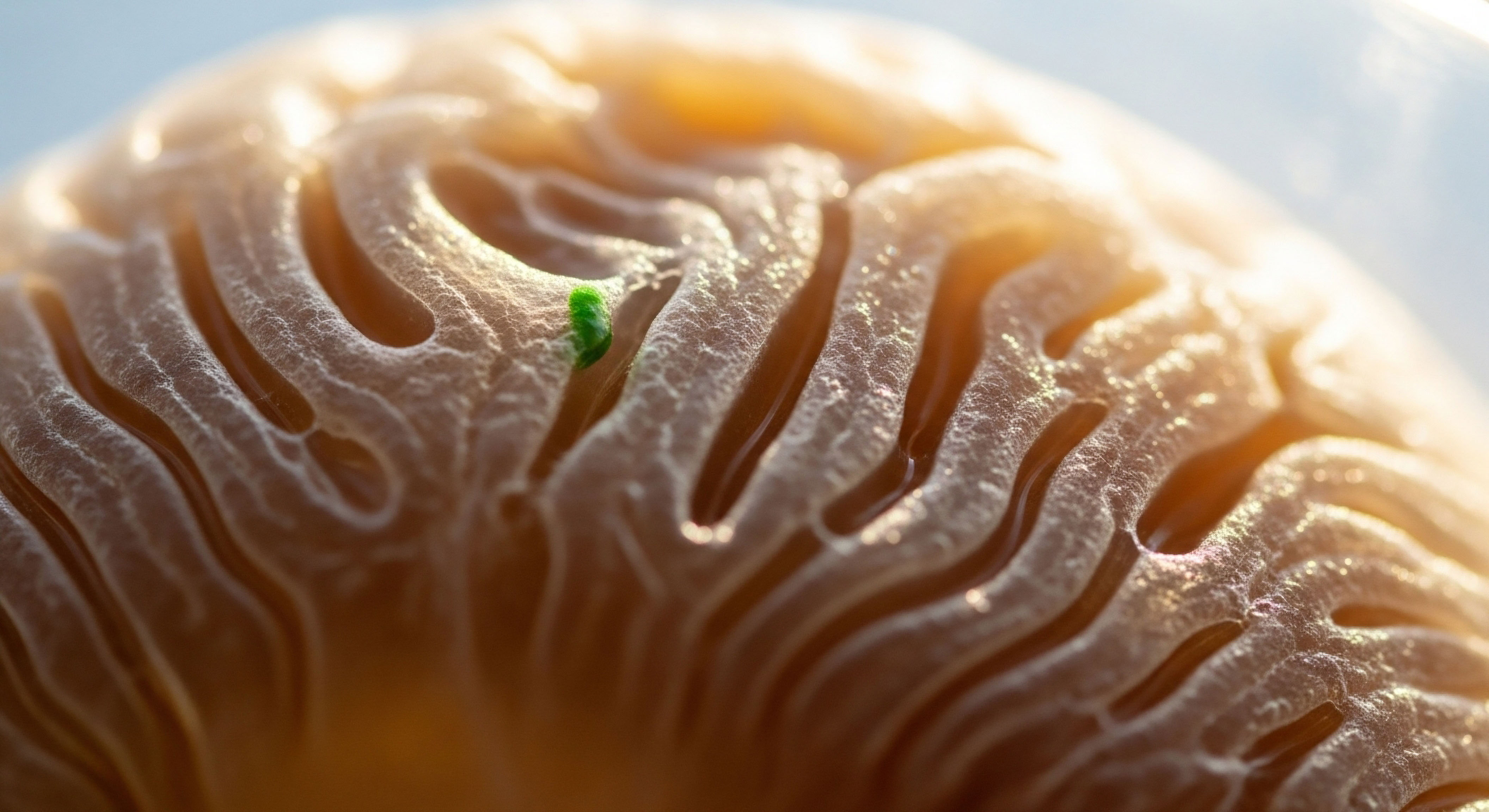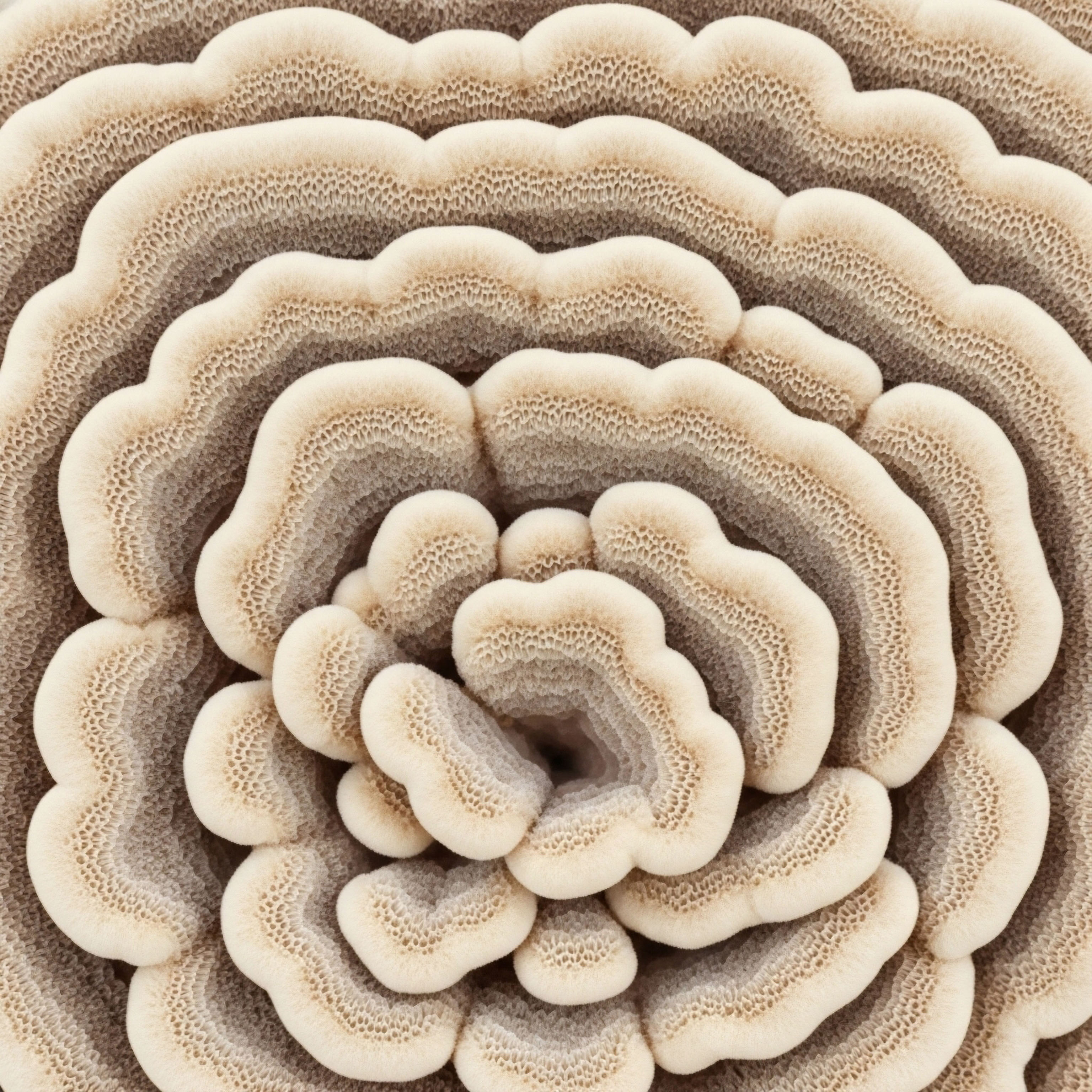

Fundamentals
Have you ever experienced a subtle shift in your vitality, a lingering sense of fatigue, or perhaps a change in your mood that feels disconnected from daily events? Many individuals report such feelings, often attributing them to the natural progression of life or the stresses of modern existence.
These experiences, however, frequently point to deeper biological rhythms within your system, particularly those governed by your hormones. Understanding these internal messengers offers a path to reclaiming your energy and overall well-being.
Your body operates through an intricate network of communication, and hormones serve as its primary messaging service. These chemical signals, produced by various glands, travel through your bloodstream to distant tissues and organs, orchestrating a vast array of physiological processes. They regulate everything from your metabolism and sleep cycles to your mood and reproductive functions. When this delicate hormonal balance is disrupted, the effects can ripple throughout your entire system, impacting how you feel and how your body performs.

The Endocrine System and Its Widespread Influence
The collection of glands that produce and release hormones constitutes the endocrine system. This system acts as a central command center, influencing nearly every cell, tissue, and organ. Its widespread influence means that even minor fluctuations in hormone levels can have significant consequences for your health. For instance, the endocrine system directly impacts your cardiovascular health, a connection often overlooked when considering symptoms like persistent tiredness or unexplained weight changes.
Hormones act as vital chemical messengers, orchestrating numerous bodily functions and profoundly influencing overall well-being.
Consider the interplay between your hormonal status and your heart. Hormones affect blood vessel elasticity, blood pressure regulation, and even the way your heart muscle functions. A decline in certain hormone levels, such as those seen with aging or specific medical conditions, can alter these cardiovascular parameters, potentially contributing to a less optimal state of health. Recognizing this connection is a crucial step toward a more holistic understanding of your body.

Hormonal Feedback Loops
The endocrine system maintains its balance through sophisticated feedback loops. Imagine a thermostat in your home ∞ when the temperature drops, the heating system activates; once the desired temperature is reached, the heating turns off. Your body employs similar mechanisms. For example, when certain hormone levels fall below a set point, your brain signals glands to produce more. Conversely, when levels rise too high, production is suppressed. This constant adjustment ensures stability, yet various factors can disrupt this finely tuned system.
Understanding these foundational concepts provides a framework for exploring how targeted interventions, such as hormonal therapies, can support your body’s natural systems. The goal is not to override your biology, but to assist it in recalibrating toward optimal function. This personal journey involves listening to your body’s signals, interpreting them through a scientific lens, and then applying evidence-based strategies to restore vitality.


Intermediate
When considering hormonal therapies, the focus shifts from simply identifying symptoms to understanding the precise biochemical recalibrations that can restore balance. These protocols are designed to address specific deficiencies or imbalances, working with your body’s inherent systems to optimize function. The “how” and “why” behind these interventions reveal a sophisticated interplay between therapeutic agents and your internal physiology.

Testosterone Optimization Protocols
Testosterone, often associated primarily with male health, plays a significant role in both men and women, influencing energy levels, mood, bone density, and cardiovascular health. When levels decline, individuals may experience a range of symptoms, prompting consideration of testosterone replacement therapy (TRT).

Testosterone Replacement Therapy for Men
For men experiencing symptoms of low testosterone, such as reduced energy, decreased libido, or changes in body composition, a common protocol involves weekly intramuscular injections of Testosterone Cypionate (200mg/ml). This approach aims to restore circulating testosterone to physiological levels. To support natural production and preserve fertility, Gonadorelin is often administered via subcutaneous injections twice weekly. Gonadorelin stimulates the pituitary gland to release luteinizing hormone (LH) and follicle-stimulating hormone (FSH), which are essential for testicular function.
A potential concern with testosterone administration is its conversion to estrogen, which can lead to undesirable effects. To mitigate this, an aromatase inhibitor like Anastrozole may be prescribed as a twice-weekly oral tablet. This medication helps block the conversion of testosterone to estrogen, maintaining a healthy balance between these hormones. In some cases, Enclomiphene might be included to further support LH and FSH levels, particularly for men seeking to maintain endogenous testosterone production or fertility.

Testosterone Balance for Women
Women also experience symptoms related to suboptimal testosterone levels, including irregular cycles, mood fluctuations, hot flashes, and diminished libido. Protocols for women typically involve much lower doses of testosterone. Testosterone Cypionate is often administered weekly via subcutaneous injection, usually at 10 ∞ 20 units (0.1 ∞ 0.2ml).
For women, the balance with other sex hormones, particularly progesterone, is vital. Progesterone is prescribed based on menopausal status, playing a key role in uterine health and overall hormonal equilibrium. Another option for testosterone delivery in women is pellet therapy, which involves the subcutaneous insertion of long-acting testosterone pellets. Anastrozole may be considered with pellet therapy when appropriate, to manage estrogen conversion.
Hormonal therapies, such as testosterone replacement, aim to restore physiological balance and alleviate symptoms by addressing specific deficiencies.

Growth Hormone Peptide Therapy
Beyond traditional hormone replacement, specific peptides can modulate the body’s own growth hormone production, offering benefits for active adults and athletes seeking improvements in body composition, recovery, and vitality. These peptides act as secretagogues, encouraging the pituitary gland to release more of its natural growth hormone.
Key peptides in this category include Sermorelin, Ipamorelin / CJC-1295, Tesamorelin, Hexarelin, and MK-677. Each of these agents interacts with specific receptors to stimulate growth hormone release, albeit through slightly different mechanisms. For instance, Ipamorelin and CJC-1295 (without DAC) are often combined to provide a pulsatile release of growth hormone, mimicking the body’s natural rhythm. Tesamorelin is particularly noted for its effect on reducing visceral fat.

Other Targeted Peptides
The therapeutic landscape extends to other specialized peptides addressing distinct health concerns. PT-141 (Bremelanotide) is utilized for sexual health, acting on melanocortin receptors in the brain to influence sexual desire. Pentadeca Arginate (PDA) is a peptide recognized for its role in tissue repair, wound healing, and modulating inflammatory responses. These targeted agents demonstrate the precision available within modern biochemical recalibration strategies.
The administration of these peptides is typically via subcutaneous injection, allowing for precise dosing and systemic distribution. The rationale behind peptide therapy lies in its ability to stimulate endogenous hormone production, working with the body’s existing pathways rather than simply replacing hormones.
How Do Hormonal Therapies Influence Cardiovascular Health Outcomes?
The relationship between hormonal therapies and cardiovascular health is a subject of ongoing clinical investigation and careful consideration. For instance, testosterone’s impact on the cardiovascular system is complex. Studies suggest that in men with diagnosed hypogonadism, testosterone replacement therapy does not increase the risk of cardiovascular events or all-cause mortality. Some research even indicates potential cardiovascular benefits, such as improvements in lipid profiles, insulin sensitivity, and endothelial function, particularly when testosterone levels are normalized.
For women, the timing of menopausal hormone therapy (MHT) appears to be a significant factor in its cardiovascular effects. When initiated early in menopause, MHT may offer cardiovascular benefits, including improvements in cholesterol levels and blood pressure. However, starting MHT many years after menopause onset, especially in older women with pre-existing cardiovascular disease, has shown mixed or even unfavorable outcomes in some large trials. This highlights the importance of individualized assessment and timing.
Growth hormone-releasing peptides also show promise for cardiovascular health. Research indicates that these peptides can have direct cardiotropic actions, potentially protecting against myocardial damage and improving cardiac function, independent of their growth hormone-releasing effects. For example, Hexarelin has demonstrated anti-apoptotic activity in cardiac cells and positive inotropic effects. Tesamorelin, by reducing visceral fat, indirectly contributes to improved metabolic and cardiovascular risk factors.
The table below summarizes key aspects of testosterone optimization protocols for men and women.
| Protocol Aspect | Men’s Testosterone Optimization | Women’s Testosterone Balance |
|---|---|---|
| Primary Agent | Testosterone Cypionate (IM injection) | Testosterone Cypionate (Subcutaneous injection) |
| Typical Dosage | 200mg/ml weekly | 10 ∞ 20 units (0.1 ∞ 0.2ml) weekly |
| Ancillary Medications | Gonadorelin, Anastrozole, Enclomiphene (optional) | Progesterone, Anastrozole (with pellets) |
| Delivery Methods | Intramuscular injections | Subcutaneous injections, Pellet Therapy |
| Main Goals | Restore vitality, improve body composition, preserve fertility | Address irregular cycles, mood changes, low libido, hot flashes |
The selection of specific agents and dosages is always a personalized process, guided by comprehensive laboratory assessments and a thorough understanding of an individual’s health profile and goals.


Academic
A deep exploration of how hormonal therapies influence cardiovascular health outcomes requires examining the intricate molecular and cellular mechanisms at play. The endocrine system does not operate in isolation; its components are deeply integrated with metabolic pathways, inflammatory responses, and the delicate functions of the cardiovascular system. This section will analyze the complex interplay of sex hormones and growth hormone axis modulation on cardiac and vascular physiology, drawing upon clinical trial data and mechanistic studies.

Sex Hormones and Vascular Endothelium
The vascular endothelium, a single layer of cells lining blood vessels, plays a central role in cardiovascular health, regulating vascular tone, blood clotting, and inflammatory processes. Sex hormones exert significant effects on endothelial function. Testosterone, for instance, can influence the vascular wall directly or through its aromatization into estrogen. Endothelial cells and vascular smooth muscle cells possess receptors for both androgens and estrogens, allowing for direct hormonal signaling.
In men with hypogonadism, low testosterone levels are associated with adverse changes in lipid profiles, increased pro-inflammatory factors, and higher rates of metabolic syndrome, all contributing to an elevated cardiovascular risk. Testosterone replacement therapy in these individuals has been shown to improve insulin sensitivity, reduce central obesity, and lower total cholesterol and low-density lipoprotein (LDL) cholesterol.
Some studies report a reduction in major adverse cardiovascular events (MACE) and overall mortality in hypogonadal men receiving TRT, suggesting a protective role. However, the impact on high-density lipoprotein (HDL) cholesterol can vary, with some studies showing a decrease, which may relate to reverse cholesterol transport rather than an atherogenic effect.
What Molecular Mechanisms Underpin Hormonal Influence on Cardiac Function?
Estrogen’s influence on the cardiovascular system is particularly well-documented in women. Prior to menopause, higher estrogen levels are associated with a lower incidence of cardiovascular disease. Estrogen interacts with estrogen receptors (ERs), specifically ERα and ERβ, located in endothelial cells, vascular smooth muscle, and the extracellular matrix. These interactions lead to both genomic and non-genomic effects, including vasodilation, reduced blood pressure, and anti-inflammatory actions.
The timing hypothesis for menopausal hormone therapy (MHT) suggests that initiating estrogen therapy early in menopause, when the vascular system is still relatively healthy, may confer cardiovascular benefits. This “window of opportunity” concept is supported by studies showing that early MHT can reduce coronary artery atherosclerosis.
Conversely, delaying MHT for several years after menopause may blunt these protective effects, and in some cases, even increase risk, particularly for venous thromboembolism, depending on the type and route of administration. Transdermal estrogen, for example, appears to have a more favorable profile regarding triglycerides and coagulation factors compared to oral formulations.
The timing and type of hormonal therapy significantly influence its cardiovascular effects, emphasizing the need for individualized clinical assessment.

Growth Hormone Axis and Cardiometabolic Health
The growth hormone (GH) and insulin-like growth factor-1 (IGF-1) axis exerts profound effects on cardiac development and adult heart function. GH-releasing peptides (GHRPs) are synthetic molecules that stimulate GH release, but also possess direct, GH-independent cardiotropic actions. Receptors for GHRPs, such as ghrelin receptors, are found in various peripheral tissues, including the heart, adrenal glands, and vascular system, often at higher densities than in the hypothalamo-pituitary system.
Studies have shown that GHRPs can protect against ischemia-induced myocardial damage, improve left ventricular function, and exhibit anti-apoptotic activity in cardiomyocytes. For instance, Hexarelin has been observed to improve stroke volume and decrease total peripheral resistance in animal models of heart failure.
These peptides may also reduce myocardial fibrosis, a process that impairs cardiac function in chronic heart disease. Tesamorelin, a synthetic GH-releasing hormone analog, has demonstrated a significant reduction in visceral adipose tissue, which is a key contributor to metabolic syndrome and cardiovascular risk. By targeting visceral fat, Tesamorelin indirectly improves lipid profiles and insulin sensitivity, thereby mitigating cardiovascular strain.
Can Personalized Hormonal Protocols Mitigate Cardiovascular Risk?
The complexity of hormonal influence on cardiovascular health necessitates a highly personalized approach to therapy. This involves not only assessing baseline hormone levels but also considering an individual’s genetic predispositions, lifestyle factors, and existing cardiovascular risk profile. For men, maintaining optimal testosterone levels within a physiological range, while carefully monitoring hematocrit and estrogen levels, is paramount.
For women, the choice of estrogen type, route of administration (oral versus transdermal), and the inclusion of progesterone must be tailored to menopausal stage and individual risk factors.
The table below provides a comparative overview of the cardiovascular effects associated with different hormonal interventions.
| Hormonal Intervention | Potential Cardiovascular Benefits | Considerations/Monitoring |
|---|---|---|
| Testosterone Replacement (Men) | Improved lipid profile, insulin sensitivity, endothelial function; reduced MACE risk in hypogonadal men. | Hematocrit, estrogen levels, pre-existing CVD status. |
| Estrogen Therapy (Women) | Improved cholesterol, blood pressure, vasodilation (especially early initiation). | Timing of initiation, route of administration (oral vs. transdermal), progestin co-administration, VTE risk. |
| Growth Hormone Peptides | Cardioprotective effects, improved cardiac function, reduced visceral fat, anti-fibrotic actions. | Potential for GH-related side effects (e.g. fluid retention), long-term safety data still developing. |
The ongoing research continues to refine our understanding of these complex interactions, emphasizing that a nuanced, evidence-based strategy is essential for optimizing both hormonal balance and long-term cardiovascular well-being.

References
- Al-Dujaili, E. A. S. & Al-Dujaili, S. A. (2024). Peptides in Cardiology ∞ Preventing Cardiac Aging and Reversing Heart Disease. Journal of Cardiovascular Development and Disease, 11(12), 297.
- Bassil, N. Alkaade, S. & Morley, J. E. (2009). Cardiovascular issues in hypogonadism and testosterone therapy. Therapeutic Advances in Urological Disease, 1(4), 159-172.
- Corona, G. Rastrelli, G. & Maggi, M. (2013). Hypogonadism as a risk factor for cardiovascular mortality in men ∞ a meta-analytic study. European Journal of Endocrinology, 169(6), 747-761.
- Devesa, J. Devesa, P. & Arce, V. M. (2016). Growth Hormone (GH) and Cardiovascular System. International Journal of Molecular Sciences, 17(10), 1668.
- Gomberg, S. E. & Nudy, M. (2025). Can hormone therapy improve heart health in menopausal women? Penn State Health News.
- Isidori, A. M. Giannetta, E. Greco, E. A. Gianfrilli, D. Bonifacio, A. Isidori, A. & Fabbri, A. (2005). Effects of testosterone on body composition, bone metabolism and serum lipid profile in middle-aged men ∞ a meta-analysis. Clinical Endocrinology, 63(3), 280-293.
- Lau, Y. S. & Lee, Y. K. (2024). Association between testosterone replacement therapy and cardiovascular outcomes ∞ A meta-analysis of 30 randomized controlled trials. Progress in Cardiovascular Diseases, 85, 45-53.
- Li, Y. Wang, X. Zhang, Y. & Li, Y. (2023). Cardiovascular Outcomes of Hypogonadal Men Receiving Testosterone Replacement Therapy ∞ A Meta-analysis of Randomized Controlled Trials. Endocrine Practice, 30(1), 2-10.
- Papadakis, G. & Kassi, E. (2024). The Inverse Association between Testosterone Replacement Therapy and Cardiovascular Disease Risk ∞ A Systematic 25-year Review and Meta-Analysis Analysis of Prospective Cohort Studies from 1999 to 2024. ClinicSearch.
- Sharma, R. & Grewal, A. (2023). Cardiovascular Safety Outcomes of Testosterone Replacement in Men with Late-Onset and Functional Hypogonadism ∞ A Systematic Review. ClinMed International Library.
- Sun, Y. & Chen, Y. (2024). Effect of Testosterone Replacement Therapy on Cardiovascular Outcomes in Males ∞ a meta-analysis of Randomized Controlled Trials. American Heart Association Journals.
- Tivesten, A. & Hulthe, J. (2014). Testosterone and cardiovascular disease ∞ a narrative review. Journal of Internal Medicine, 276(5), 459-472.
- Vickers, M. H. & Sloboda, D. M. (2012). The impact of female sex hormones on cardiovascular disease. Frontiers in Physiology, 3, 25.
- Yuen, T. & Bhasin, S. (2020). Menopausal Hormone Therapy and Cardiovascular Disease. Revista Española de Cardiología (English Edition), 73(10), 830-838.
- Zhou, X. Zhang, H. & Wang, X. (2006). GH-releasing peptides improve cardiac dysfunction and cachexia and suppress stress-related hormones and cardiomyocyte apoptosis in rats with heart failure. American Journal of Physiology-Heart and Circulatory Physiology, 290(4), H1545-H1553.

Reflection
Understanding your body’s hormonal landscape is a deeply personal endeavor, one that extends beyond simple symptom management. The insights gained from exploring the intricate connections between hormonal balance and cardiovascular health represent a significant step in your personal wellness journey. This knowledge empowers you to view your symptoms not as isolated occurrences, but as signals from a complex, interconnected system seeking equilibrium.
The path to reclaiming vitality is unique for each individual. It requires a thoughtful consideration of your biological systems, guided by precise, evidence-based information. This understanding forms the foundation upon which truly personalized wellness protocols can be built. Your body possesses an innate capacity for self-regulation, and with the right support, it can recalibrate toward optimal function.
Consider this exploration a beginning, an invitation to engage more deeply with your own physiology. The journey toward sustained well-being is continuous, marked by ongoing learning and adaptation. By embracing this proactive stance, you position yourself to make informed choices that honor your body’s needs and support your long-term health aspirations.



